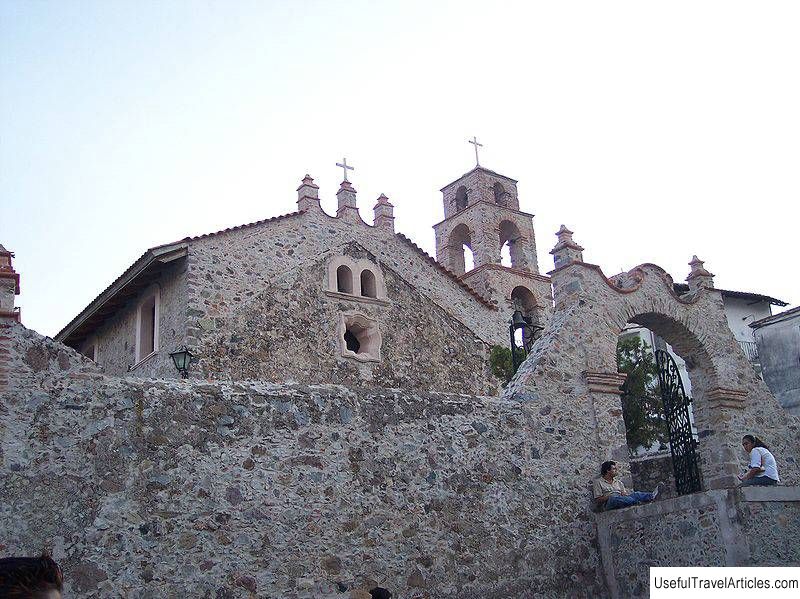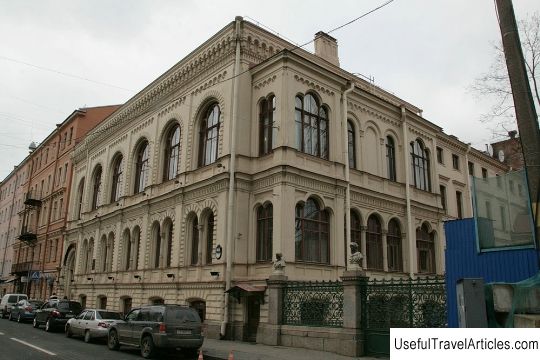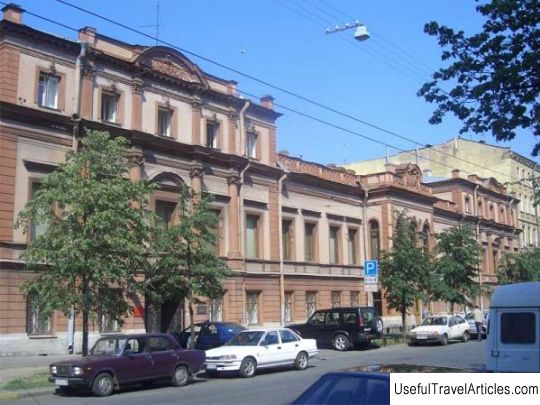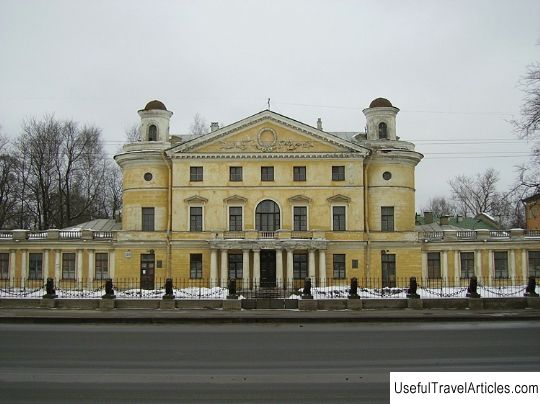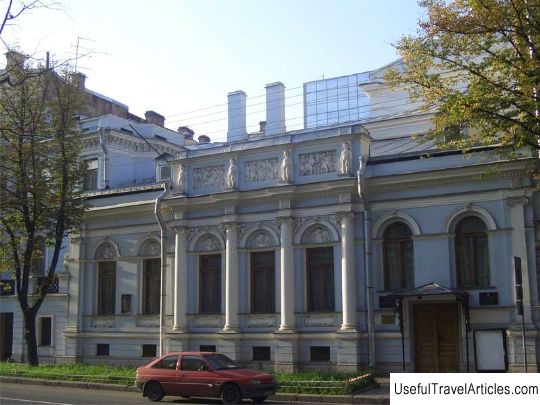Mansion of Princess Yusupova description and photo - Russia - Saint Petersburg: Saint Petersburg
Rating: 8,0/10 (655 votes) 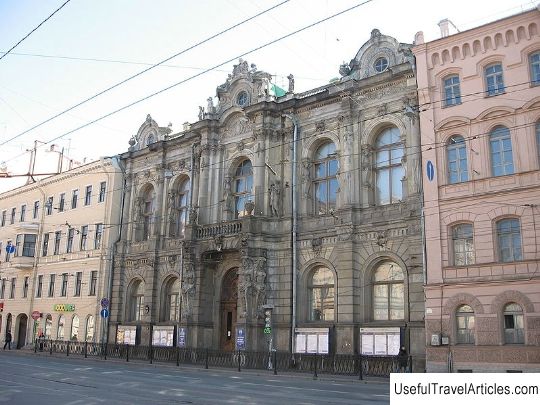
Mansion of Princess Yusupova description and photos - Russia - Saint Petersburg: Saint Petersburg. Detailed information about the attraction. Description, photos and a map showing the nearest significant objects. Photo and descriptionConstruction of the mansion (foundry house) of Princess Zinaida Yusupova (nee Naryshkina) on Liteiny Prospekt in St. Petersburg began in 1852. Initially, the project of the palace was developed by the architect Harald Bosse, but, due to the fact that it was not approved by the countess, the order was transferred to the architect Ludwig Bonstedt, already known at that time. The construction of the mansion was completed in 1858. The mansion is a two-storey building in the style of the architecture of the Italian Renaissance with baroque elements. In accordance with the architect's idea, the exterior of the building was supposed to represent a completely new approach to the interpretation of the Baroque style and differ from the mansions already built at that time in St. Petersburg. Subsequently, this style will be called "neo-baroque". To solve this problem, the facing of the facade of the building was made of natural stone (sandstone) of local, Gatchina and Bremen rocks. The figures of the caryatids at the front door are carved from the same material. Also outside the building is decorated with stucco, columns, pilasters. Above the central pediment were the family coats of arms of the Naryshkin and Yusupov families. The ceremonial halls of the palace (Pink, White, Blue) are executed in various styles. Artificial marble, stucco and gilding were used to decorate the interior. Orders for the execution of artistic and decorative works of the interior decoration of the palace were given to the best and most famous masters at that time. The famous artist N. Maikov in the 19th century made medallions, desudeports and plafonds of the palace. The pink drawing-room of the palace (medallions in it) belong to the hand of the artist K. Paul. The walls of the huge library are decorated with panels by the artist G. Robert. Along with the library, especially noteworthy are the large dining room, portrait and concert halls, the Green Living Room, the winter garden and the grand marble staircase made by the stonecutter Balushkin. In 1855, the mansion project was supplemented by a house church. Special permission was given by the Holy Synod to Princess Yusupova due to the latter's illness, due to which she could not attend church services outside the home. The home church was located on the third floor of the service wing. On the basis of the capital walls already erected at that time, the famous carpenter Lapshin built a wooden vault and a dome, resting on wall pillars. The artistic decoration of the temple was completed a year later after the completion of the construction of the mansion itself (in 1859). The iconostasis of the church, decorated with carved gilding, was designed by the artist and architect Alexei Maksimovich Gornostaev. The image of the Protection of the Holy Mother of God was placed near the right choir, and the patroness of Princess Yusupova, the martyr Zinaida, on the left. The church was consecrated only in 1861 in the name of the Protection of the Holy Mother of God. Particularly noteworthy were the reduced model of the chapel of the Iberian Mother of God and the cast of the hand of Emperor Nicholas I. The views of the mansion of that time were immortalized in the works of the watercolorist and graphic artist Vasily Sadovnikov, who commissioned Countess Yusupova for a series of thirty watercolors. After the death of Princess Z.I. Yusupova in 1893, representatives of the princely family owned the mansion for another 15 years. The last owner (until 1908) was the princess's great-grandson Felix Yusupov (junior). After that, the building was rented by the Theater Club. During the First World War, a hospital was located in the mansion. After the revolution, the building was nationalized and progressively transferred to various organizations. At the same time, the house church was actually lost. In 1950 (according to other sources - in 1949), the building was taken over by the Knowledge Society (where the central lecture hall was located). Now the building houses the Institute of Foreign Economic Relations, Economics and Law.        We also recommend reading Sforza Castle (Castello Sforzesco) description and photos - Italy: Milan Topic: Mansion of Princess Yusupova description and photo - Russia - Saint Petersburg: Saint Petersburg. |
